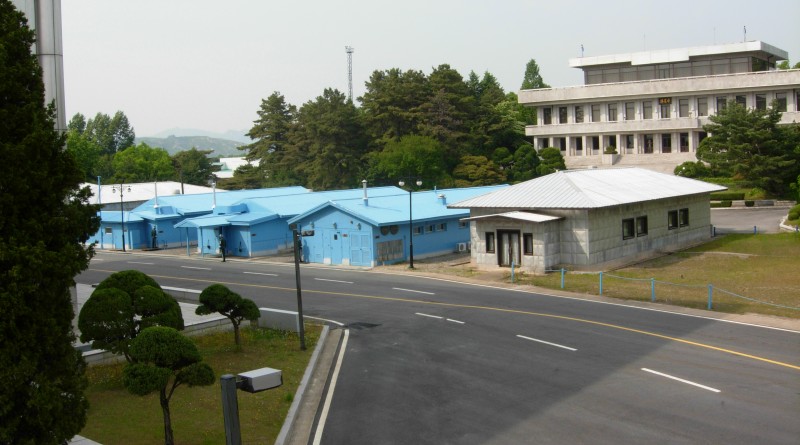Tour of the Demilitarized Zone and the Joint Security Area, South Korea
The Demilitarized Zone (DMZ) and the Joint Security Area (JSA) are technically parts of both the Republic of Korea (ROK, what is usually called “South Korea”) and the People’s Democratic Republic of Korea (PDRK, what is usually called “North Korea”), but I list “South Korea” in the blog title because with the exception of a few minutes (and one photography) my visit to the area was strictly on the South Korean side.
When the DMZ was set up in 1953, the Joint Security Area was created on the land that was technically a part of the village of Panmunjon, or at least on agricultural fields that were a part of the village. While the village itself no longer exists (the ruins of the village are actually on the North Korean side), the name Panmunjon is often used interchangeably with JSA to describe the area. The purpose of the JSA was to be used as a neutral place to meet and discuss issues between the two sides and to exchange prisoners.
You can take one of several different tours of the DMZ and the JSA. The cost of a tour is very reasonable. Some tours even include stops at the “Third Tunnel of Aggression” if you have the time. Most of these tours leave from Seoul and last the better part of a day. The relatively short drive north on a tour bus to the DMZ really shows you how close the South Korean capital is to the border. While the tours are generally operated by local South Korean companies, when you enter the DMZ the tour is mostly conducted by US Army soldiers who guide and provide information along the way. Tours are also available in several different languages; a tour that we were paired with was given in Japanese, with the tour guide translating everything the US soldiers said.
A few quick things to mention about the tours:
- Wardrobe: You can’t wear any camouflage or anything that could make you appear as part of the military. There are very precise rules about how many troops both sides are allowed to have within the DMZ and the JSA. So, to ensure no “misunderstandings”, civilians tourist have to be obviously tourists.
- No pointing: Tensions are understandable higher at the JSA then most places in the Korean peninsula, so at a quick glance someone being pointed at from a distance might not be able to instantly tell if they are being pointed with fingers or with a gun.
- Passport: You need to have your passport with you when you enter the DMZ. No passport; you get off the bus and wait for the tour bus to pick you up again on its trip back south out of the DMZ.
- Waiver: You have to sign a document stating that you acknowledge that you are visiting the JSA, which is a hostile area and that there is the chance of injury or death.
The tours usually include:
- Imjingak; a “resort” or centre a few kilometres south of the DMZ itself that was set up to honour those whose families were spilt between the north and south as a result of the war. A number of monuments are erected there.
- Freedom House (sometimes called “House of Freedom”); the largest building in the JSA on the south side overlooking the Military Demarcation Line (MDL).
- Military Armistice Commission (MAC) building; one of the blue UN meeting buildings which is located directly on the MDL. Within the MAC building you have the opportunity to walk around, even to the North Korean side of the room and look out the windows. Take a look at the photo gallery below for two examples of this.
- A few different observation southern posts where you can clearly see the MDL and North Korean observation posts looking south.
- Bridge of No Return; a historic site used by where prisoners of war of both sides to return home. No longer in use.
- Tourist shop; a store located at Camp Boniface just 400 metres south southern limit of the DMZ (2,400 meters south of the MDL). Where you can buy souvenirs and see its 1-hole, 192 yard golf course (this is the famous “Most dangerous golf course in the world” due to the barbed wire and surrounding mine field).
From my experience on the tour, I would highly recommend that if you are in the Seoul area for any length of time that you take the time to going on a tour yourself. That is of course assuming that tensions in the area are not in an elevated status… at which point all tours are cancelled.
Below is a short video showing the buildings in the JSA along the MDL from the window of the tour bus. Beneath the video is a photo gallery of many of the interesting features of Imjingak and the JSA.
























